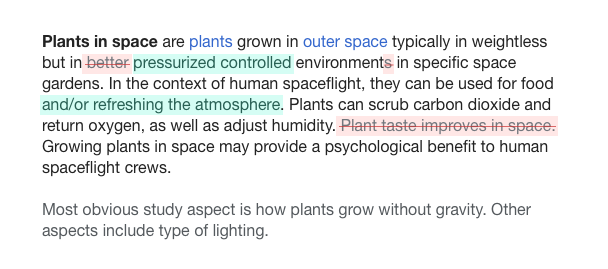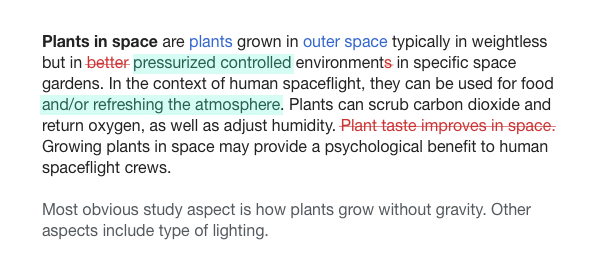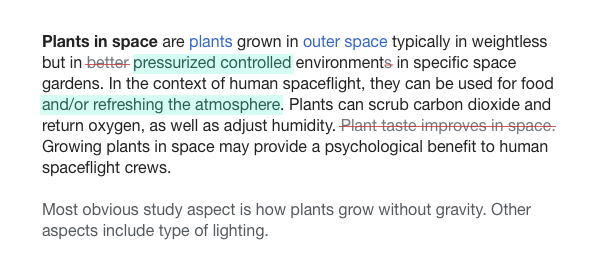Reviewing changes made to content is an essential part of different processes on a wiki (e.g., review the effect of a recent change, provide feedback on your own edits, etc.).
Changes have been usually represented based on wikitext code diffs. However, for users manipulating the contents in a rich text environment (e.g., using Visual Editor) this produces a disconnect between the representation of content (rich text) and the representation of its changes (code).
This ticket aims to identify the aspects that would make changes in a rich text content to be intuitive and accesible, considerations to take into account, previous discussions in this context as well as examples on how similar problems have been approached in the past and elsewhere.
Current situation
On desktop, diffs are presented as side-by-side comparison of the code before and after the change. With blue and yellow highlights to emphasise changing paragraphs and specific text.
On mobile, diffs are integrated in a single view of the wikitext code. The removed code is highlighted in red and the added code is highlighted in green.
A previous initiative did some exploration in this area.
Aspects to consider
Some general aspects for a good solution in this context:
- Intuitive. It should be immediately obvious to identify what changed in the content.
- Accessible. Any solution should not rely only on elements that may be indistinguishable for some users (e.g., colors or very small symbols).
- Work for different kinds of content Solutions need to consider how they work not only on text modifications but with rich formatting too (e.g., strikethrough text, addition of links, removal of images, etc.) and accommodate for those cases.
- Not necessarily static. The solution is not only the static representation. Interactions such as allowing to easily switch between the original and modified versions may be part of the solution.





